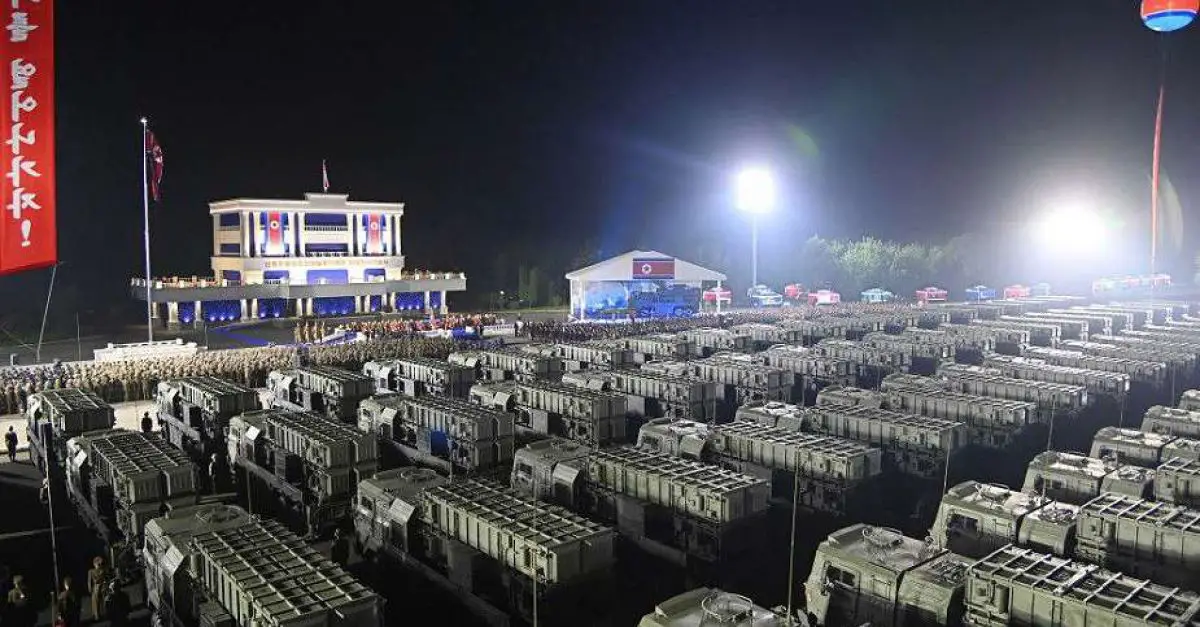Breaking News
Analysis: Combat Capabilities of North Korea's Hwasong-11D Missile and Its Threat to South Korea.
North Korea's recent acquisition of 250 Hwasong-11D short-range ballistic missile systems marks a significant enhancement of its military capabilities, posing a substantial threat to South Korea and regional security dynamics. With the ability to launch a potential salvo of 1,000 missiles, this development raises concerns about North Korea's strategic intentions and the stability of the Korean Peninsula. The Hwasong-11D's combat capabilities, characterized by its saturation attack potential and destructive capacity, necessitate a closer examination of its implications for South Korea's defense posture and broader regional security.
Follow Army Recognition on Google News at this link

North Korean military officials and personnel attend a ceremony marking the delivery of 250 Hwasong-11D ballistic missile launcher trucks to the Korean People's Army. (Picture source: North Korea News Agency)
The Hwasong-11D, also known as Hwasongpho-11Ra, is a short-range ballistic missile system with a maximum firing range of 300 km. This range allows it to reach targets across South Korea, including major urban centers, military installations, and critical infrastructure. The missile's design is reminiscent of the Soviet Tochka-U system, known for its modest range and accuracy but compensated by its deployment potential in large numbers.
While the Hwasong-11D has a slightly greater range than the Tochka-U, its accuracy remains a concern, as the Circular Error Probable (CEP) is likely similar to the Tochka-U's 95 meters. This limitation in accuracy suggests that the Hwasong-11D is better suited for area targeting rather than precision strikes. Despite its limited accuracy, the Hwasong-11D poses a significant threat due to its potential for saturation attacks, overwhelming defensive systems with sheer volume.
The exact warhead capabilities of the Hwasong-11D remain unclear, but it is likely equipped with various conventional warheads, similar to the Tochka-U's array of options. The potential for nuclear, chemical, or biological payloads cannot be ruled out, although such capabilities have not been confirmed. However, the possibility of carrying different types of payloads, including high-explosive or submunitions, makes the missile versatile for various strategic objectives.
The Hwasong-11D's mobility and rapid deployment capabilities enhance its threat profile. The missile can be launched from multiple platforms, complicating detection and interception efforts. This mobility allows North Korea to reposition its missile units quickly, making it difficult for adversaries to target launch sites effectively. The ability to launch from multiple, potentially concealed locations increases the missile's survivability and enhances its strategic value.
For South Korea, the deployment of the Hwasong-11D necessitates a reevaluation of its defense strategies. The missile's range covers most of South Korea, including densely populated areas and critical infrastructure. The saturation attack potential, with the capability to launch up to 1,000 missiles in a single salvo, presents a formidable challenge for South Korea's missile defense systems. Current defenses, such as the THAAD and Patriot systems, may face difficulties in intercepting such a large number of incoming missiles simultaneously.
The Hwasong-11D also complicates regional security dynamics. Its presence heightens tensions on the Korean Peninsula and may prompt South Korea and its allies to enhance their missile defense capabilities further. Additionally, North Korea's continued development and acquisition of such systems could trigger an arms race in the region, prompting neighboring countries to bolster their military arsenals.
The Hwasong-11D significantly enhances North Korea's tactical capabilities, posing a substantial threat to South Korea and regional stability. Its ability to conduct saturation attacks, coupled with its range and mobility, makes it a formidable addition to North Korea's military arsenal. South Korea must reassess its defense posture and collaborate with allies to counter this evolving threat effectively, ensuring the stability and security of the region.

























